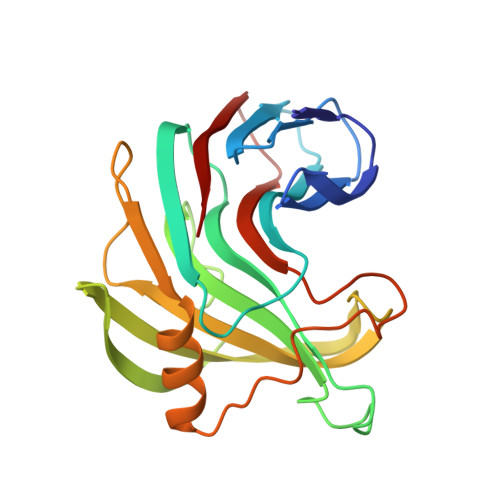Targeted metatranscriptomics of compost-derived consortia reveals a GH11 exerting an unusual exo-1,4-beta-xylanase activity.
Mello, B.L., Alessi, A.M., Riano-Pachon, D.M., deAzevedo, E.R., Guimaraes, F.E.G., Espirito Santo, M.C., McQueen-Mason, S., Bruce, N.C., Polikarpov, I.(2017) Biotechnol Biofuels 10: 254-254
- PubMed: 29118851
- DOI: https://doi.org/10.1186/s13068-017-0944-4
- Primary Citation of Related Structures:
5VQJ - PubMed Abstract:
Using globally abundant crop residues as a carbon source for energy generation and renewable chemicals production stand out as a promising solution to reduce current dependency on fossil fuels. In nature, such as in compost habitats, microbial communities efficiently degrade the available plant biomass using a diverse set of synergistic enzymes. However, deconstruction of lignocellulose remains a challenge for industry due to recalcitrant nature of the substrate and the inefficiency of the enzyme systems available, making the economic production of lignocellulosic biofuels difficult. Metatranscriptomic studies of microbial communities can unveil the metabolic functions employed by lignocellulolytic consortia and identify novel biocatalysts that could improve industrial lignocellulose conversion. In this study, a microbial community from compost was grown in minimal medium with sugarcane bagasse sugarcane bagasse as the sole carbon source. Solid-state nuclear magnetic resonance was used to monitor lignocellulose degradation; analysis of metatranscriptomic data led to the selection and functional characterization of several target genes, revealing the first glycoside hydrolase from Carbohydrate Active Enzyme family 11 with exo-1,4-β-xylanase activity. The xylanase crystal structure was resolved at 1.76 Å revealing the structural basis of exo-xylanase activity. Supplementation of a commercial cellulolytic enzyme cocktail with the xylanase showed improvement in Avicel hydrolysis in the presence of inhibitory xylooligomers. This study demonstrated that composting microbiomes continue to be an excellent source of biotechnologically important enzymes by unveiling the diversity of enzymes involved in in situ lignocellulose degradation.
Organizational Affiliation:
Instituto de Física de São Carlos, Universidade de São Paulo, Av. Trabalhador São-carlense 400, São Carlos, SP 13560-970 Brazil.














